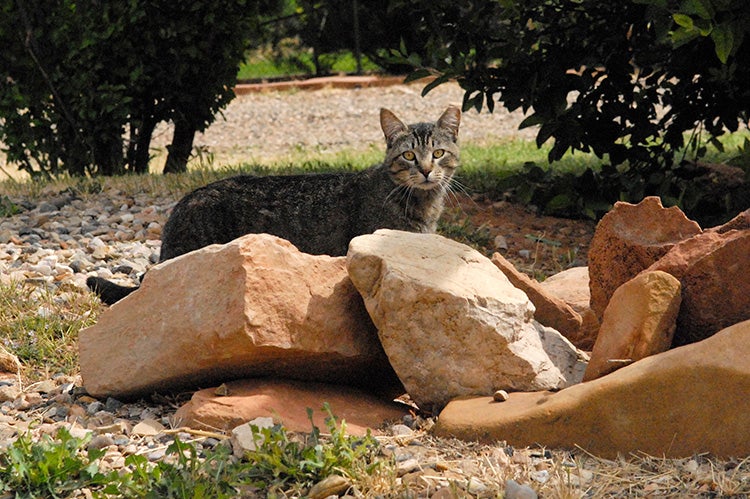Cat TNVR: What Does It Mean?
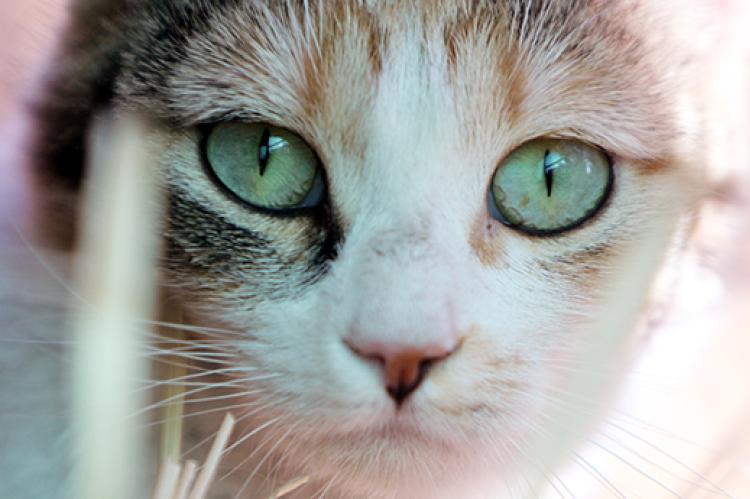
Few debates in animal welfare spark as much heat as trap-neuter-vaccinate-return (TNVR) — also known as trap-neuter-return or trap-neuter-release (TNR) — for outdoor cats. These cats are also referred to as feral cats, stray cats, alley cats, or — as Best Friends Animal Society calls them — community cats.
To some, community cats are nothing more than a nuisance. Others consider them a burden on the natural ecosystem. But many feel that these cats just happen to prefer life in the great outdoors and that they are there through no fault of their own. Many people even consider stray cats an extension of the family.
No matter where you fall on the spectrum, we’re here to help you learn more about the issue of community cats and TNVR.
Stray cats, feral cats: How many names do community cats have?
The short answer is a lot. There are almost as many names for community cats as there are ways they ended up outdoors. In addition to the popular descriptors “stray cat” and “feral cat,” here’s a quick list of common terms for these outdoor cats:
- Homeless cats (Best Friends and others object to this term being used broadly because many of these cats do have “homes.” They just happen to be outdoor homes.)
- Ownerless cats
- Free-roaming cats
- Alley cats
- Street cats
- Neighborhood cats
It’s easy to see how challenging it is to come up with one name that encompasses all outdoor cats, which is why Best Friends chooses to refer to them as community cats.
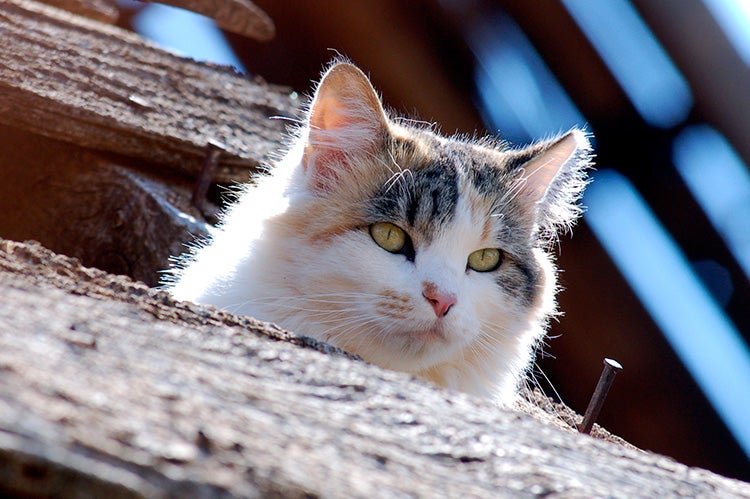
What does TNVR stand for?
TNVR stands for trap-neuter-vaccinate-return. It is a humane, nonlethal alternative to the old trap-and-kill method of managing feral cat populations. Some people also refer to it as TNR (trap-neuter-release or trap-neuter-return) because not all programs involve vaccination.
With cat TNR/TNVR, all community cats — whether they are considered stray, feral, or just free-roaming — are caught in humane cat traps, medically evaluated, spayed or neutered by a licensed veterinarian, and then returned to their original outdoor homes. Many programs also vaccinate cats against the rabies virus.
Returning cats to the location where they were trapped is very important because the cats will be familiar with food and water sources, as well as available shelter. Again, this is their outdoor home.
Opponents to TNVR sometimes claim cats are released anywhere, though it's clear that this is not common practice. Doing so would put cats in jeopardy unless careful precautions are taken. Best Friends emphasizes the need to return cats properly in all of our community cat programs and encourages others to do the same.
Most importantly, however, TNVR allows cats to have longer, healthier lives without producing litter after litter of kittens.
Humane trapping of cats
TNVR begins, of course, with humanely trapping cats. Sometimes that’s easier said than done. Unlike pet cats, community cats might not come running when you shake a can of treats. So trapping cats can require more patience plus irresistible bait, and trapping logistics differ for each group of cats.
Compassionate people willing to help with TNVR can typically borrow humane cat traps from their local animal shelters or rescue groups. Several online retailers also sell humane cat traps. Common features to all these traps are a tripping mechanism and a self-locking door.
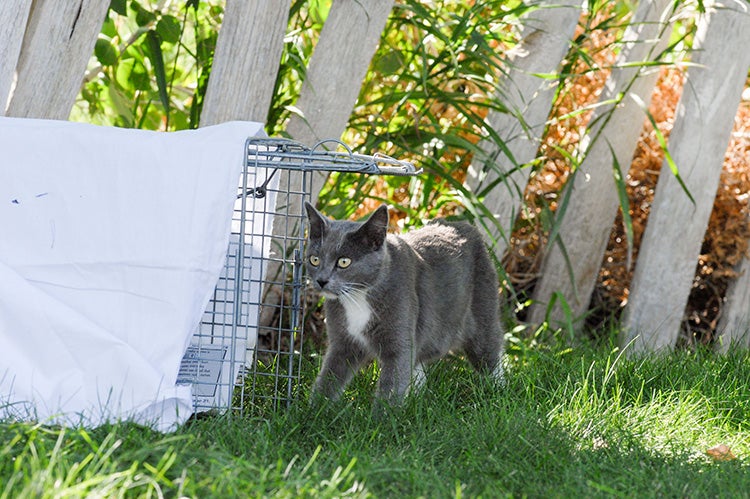
Spay/neuter and ear-tipping cats
Luckily, the spaying and neutering part of cat TNVR isn’t as tricky as the trapping part. But that’s not to say it doesn’t require planning either.
Sometimes it takes a little research and negotiation to find a spay/neuter clinic willing to fix cats at low cost. But most areas have at least one veterinarian who’s happy to help. If you need a veterinarian who provides this service, don’t give up if you don’t find one right away. Local shelters and rescue organizations often have information on low-cost spay/neuter clinics that accept community cats.
Community cats usually have the tip of one of their ears removed during their surgery. This is known as ear-tipping the cat. Does ear-tipping hurt the cat? Nope, it’s done while under anesthesia, so the cats don’t feel a thing. A ear-tipped cat is the universal sign that says: “I’ve already been through the TNVR program. You don’t need to bother to trap me again and take me to the vet to be fixed.”
While cats are in the care of a vet, they also usually receive vaccinations and a general wellness exam. Best Friends recommends that TNVR programs vaccinate cats against rabies, feline viral rhinotracheitis, calicivirus, and panleukopenia (the last three are addressed through the FVRCP combination vaccine). If all goes well, there are no health concerns, and the cats recover nicely from surgery, they are returned to the site where they were trapped and then they are released.
Learn how to start a cat TNVR program in your community
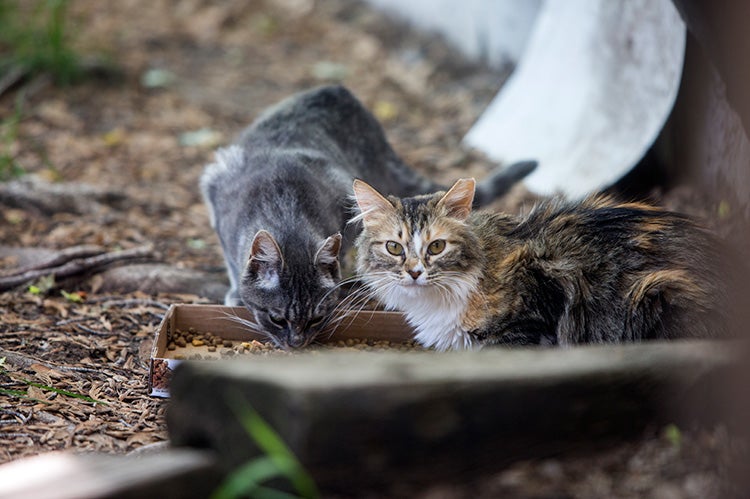
A brief history of cat TNVR
The humane approach of trap-neuter-vaccinate-return emerged in Great Britain during the 1950s and later in Denmark in the 1970s. At some point during that time, cat TNVR began to take hold in the U.S. as well, but it didn’t become part of the public discourse until the 1990s. That’s when Alley Cat Allies eased TNVR into the mainstream.
TNVR evolved in the U.S. after Jacksonville, Florida, became the first city to introduce it in a shelter setting in 2008. At that time, the city teamed up with local nonprofit First Coast No More Homeless Pets and, with funding from Best Friends, launched the Feral Freedom program.
This program allows First Coast No More Homeless Pets to take all community (feral) cats entering Jacksonville’s Animal Care and Protective Services so that they can be spayed or neutered, vaccinated, ear-tipped, and returned to their outdoor homes.
Learn more about Feral Freedom
Best Friends community cat efforts
Best Friends Animal Society's community cat efforts can be divided into two main categories:
- Programming: Best Friends supports the implementation of community cat programs around the country by providing shelters with guidance and training.
- Legislation and advocacy: Best Friends tackles various legal issues relevant to the protection of community cats at both the local and state levels. We also work closely with local advocates (often through our network partners) and promote TNVR through many channels, including conference presentations and articles.
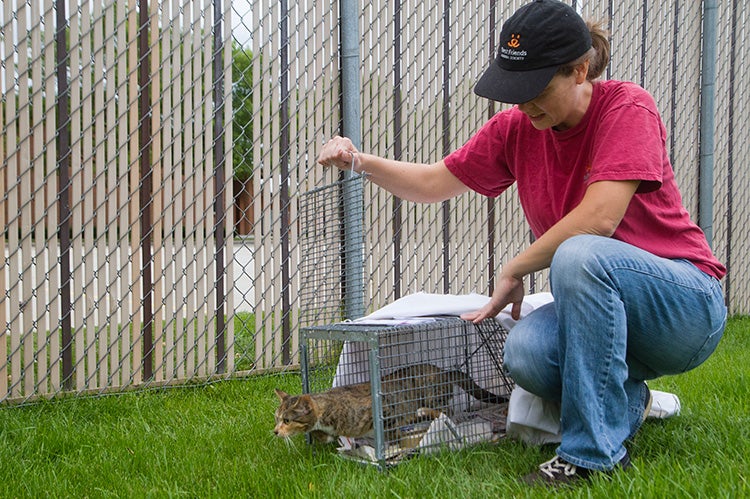
Alternative to TNVR
Is there an alternative to cat TNVR? Yes, sort of, but it certainly isn’t humane. Called the trap-and-kill method, the goal is to eliminate all outdoor cats. There’s no spay/neuter, and there’s no return for the cats.
Fans of trap-and-kill who want to eradicate outdoor cats constantly ask the questions: “Does TNVR work? Can it erase all traces of community cats?”
But the question is: Do we really want or need to exterminate all outdoor cats? Thankfully, most Americans answered no when asked this question in a nationwide survey commissioned in late 2014 by Best Friends. When presented with an analysis of the impact of trap-neuter-vaccinate-return programs on populations of feral cats in places like Jacksonville, most people realized TNVR works just fine.
Interestingly, trap-and-kill advocates cannot point to any community where this method is successful, even by their own standards, despite trap-and-kill being used for far longer than TNVR.
Watch videos on TNVR and community cats
For the most part, protests from opponents of TNVR can be placed in three categories:
- Feral cats and birds: It’s true that some cats can’t resist the hunt. But Best Friends maintains that the studies TNVR critics use to make their case are inaccurate on major points, such as using results from one habitat to make broad, sweeping statements. However, even the U.K.’s Royal Society for the Protection of Birds has declared: “Despite the large numbers of birds killed, there is no scientific evidence that predation by cats in gardens is having any impact on bird populations UK-wide.”
- Public health impact: There are three concerns here:
- First is the concern about feral cats and rabies. According to the Centers for Disease Control and Prevention (CDC), the number of rabies cases is quite low, and the risk to humans is relatively remote. Since 1960, only two cases of human rabies in the U.S. have been attributed to cats, but Best Friends still advocates for vaccinating cats before returning them.
- The second concern is the spread of a parasite called toxoplasmosis. But as the CDC notes, prevention generally is quite straightforward. The simple act of hand-washing takes care of a lot of public health concerns.
- And, finally, there are nuisance complaints. Community cats yowl, spray, and fight. But spaying/neutering eliminates production of the hormones estrogen and testosterone, thereby reducing these behaviors. The proof is reflected in numerous cases out there, but perhaps the most dramatic results came in Harrington, Delaware. Some 550 cats (93% of the count prior to trapping) were spayed or neutered and vaccinated as part of a community cat program. Afterward, nuisance calls decreased by 98%. Communities with Best Friends programs also experienced a reduction in nuisance calls.
- The cats’ welfare: Believe it or not, there are some who actually say rounding up and killing community cats is better for the cats than letting them live outdoors. Of course, there are dangers to life outside. Many are from humans, such as traffic, people with ill intentions, and dangers from more natural elements. Still, not only is killing community cats because it’s dangerous outdoors illogical, but it’s a stance that is also almost uniformly rejected by Americans — as are all lethal management methods.
Legal matters pertaining to stray cats and TNVR
There are no cookie-cutter laws when it comes to caring for community cats and TNVR. That means TNVR efforts can look slightly different in each community. But there are a few key legal issues that can have a big impact on the success of any TNVR effort:
- It’s important that community cat caregivers not be considered owners of the cats because this would falsely indicate that they have some control over them.
- In answer to TNVR critics, it should be made clear that returning street cats to the location where they were originally trapped does not constitute “abandonment” (an act of animal cruelty). Spaying or neutering cats, vaccinating them, and giving them a wellness check all contribute to improving the cats’ lives.
- Nuisance provisions in local ordinances should focus on behavior (not just the presence of free-roaming cats) and require multiple registered complaints about those behaviors.
- Mandated holding times for healthy stray and feral cats at animal shelters should be as short as possible for cats being sterilized, vaccinated, and returned to their outdoor homes. The ideal is no holding time at all, as in the bill that Best Friends helped pass in Arizona and Utah that exempts eligible community cats from any mandatory holding time.
These are just a few of the key legal issues. You can read about others in the Best Friends Community Cat Programs Handbook. The Best Friends cat initiatives team addresses these issues (and more) at local and state levels by contacting elected officials and sending out legislative alerts to encourage the involvement of Best Friends members.
The verdict on TNVR for community cats
The vast majority of Americans are on board with TNVR. Ending the killing of dogs and cats in America’s shelters requires a humane approach to caring for stray cats. TNVR is the best — and in most cases the only feasible — option on the table.
- Be a stray cat advocate with our TNVR action kit
- Sign up for email alerts about laws affecting cats
- Learn more about community cats
